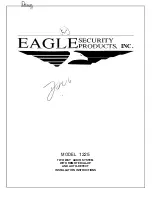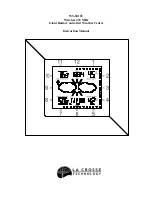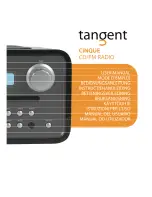
8
7
IMPORTANT NOTE:
Note: This equipment has been tested and found to comply with the limits for a Class B digital
device, pursuant to part 15 of the FCC Rules. These limits are designed to provide reasonable
protection against harmful interference in a residential installation. This equipment generates,
uses and can radiate radio frequency energy and, if not installed and used in accordance with
the instructions, may cause harmful interference to radio communications. However, there is
no guarantee that interference will not occur in a particular installation. If this equipment does
cause harmful interference to radio or television reception, which can be determined by turning
the equipment off and on, the user is encouraged to try to correct the interference by one or
more of the following measures:
—Reorient or relocate the receiving antenna.
—Increase the separation between the equipment and receiver.
—Connect the equipment into an outlet on a circuit different from that to which the receiver is
connected.
—Consult the dealer or an experienced radio/TV technician for help.
WARNING
SAFETY INFORMATION
Your wireless hand-held portable transceiver contains a low power transmitter.
This product sends out radio frequency (RF) signals when the Push-to-Talk (PTT)
button is pressed. The device is authorized to operate at a duty factor not to
exceed 50%. In August 1996, the Federal Communications Commissions (FCC)
To control your exposure and ensure compliance with the general population or
uncontrolled environment exposure limits,
F .
Any Changes or modifications not expressly approved by the party responsible
for compliance could void the user’s authority to operate the equipment.
adopted RF exposure guidelines with safety levels for hand-held wireless devices.
WARNING
Avoid Burns
Small Parts. Not for children under 3 years.
Turn off your radio power in the following conditions:
Turn off your radio before removing (installing) a battery or accessory or
when charging battery.
Turn off your radio when you are in a potentially hazardous environments:
Near electrical blasting caps, in a blasting area, in explosive atmospheres
(inflammable gas, dust particles, metallic powders, grain powders, etc.).
Turn off your radio while taking on fuel or while parked at gasoline service
stations.
To avoid electromagnetic interference and/or compatibility conflicts
Turn off your radio in any facility where posted notices instruct you to do
so, hospitals or health care facilities (Pacemakers, Hearing Aids and
Other Medical Devices) may be using equipment that is sensitive to
external RF energy.
Turn off your radio when on board an aircraft. Any use of a radio must be
in accordance with applicable regulations per airline crew instructions.


























